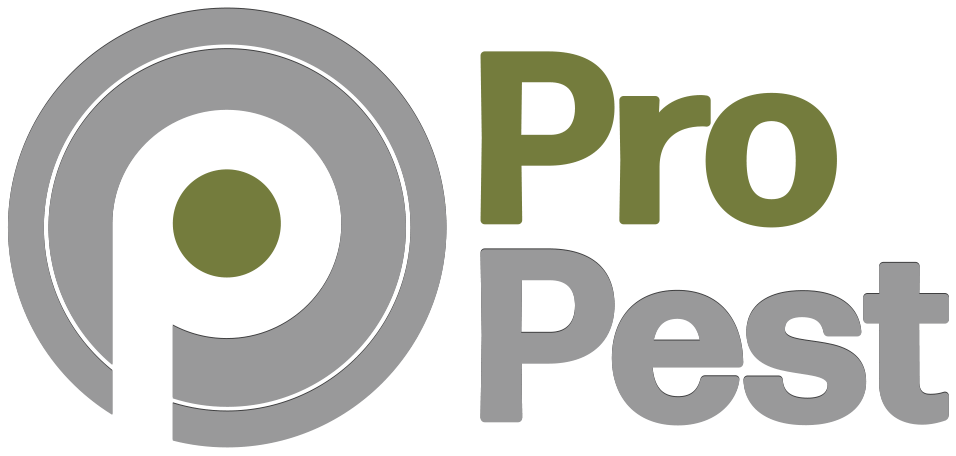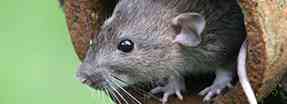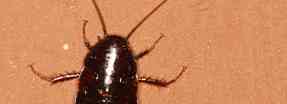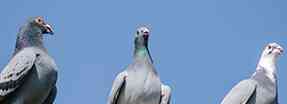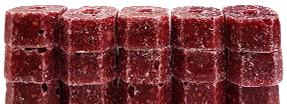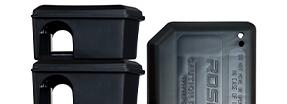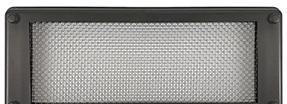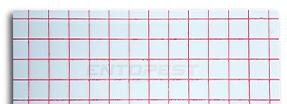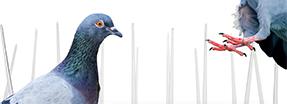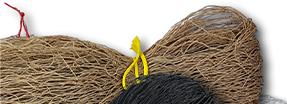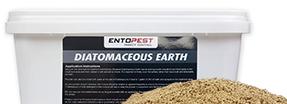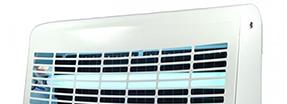
Article Chapters
Introduction
Ants are one of the most common species of insects within the UK, whilst most do not come into contact with humans the Black Ant (Lasius niger) can often cause an issue within the summer months, especially at the latter stages when flying ants are present; the stage where newly produced queens (and drones) leave the nest. Worker ants often enter properties in search of food and often infest kitchens and pantries; excavations from nests are unsightly and are often the singular cause of damage to the foundations of patio and concrete slabs, typically leading to subsidence. Before undertaking any treatment it is essential to identify the target ant as control can vary depending on the sub-species and certain ants may require a professional-only approach.
Identification & Behaviour

Black ants are black; this is by far the most common and easiest way to identify the species, whilst there are numerous species of ants in the UK only the black garden ant will cause a nuisance. If you are still unsure they are approximately 0.5cm in length. Black ants are often found within and around buildings, especially under patio slabs and other similar substrates.
Most ants encountered are workers that form a larger colony of ants with a queen at the core; it is unlikely that she will be active outside the nest. The nest is often found within soft earth or sand materials and often mounds on the surfaces that indicate activity; however, it’s important to note that ants are very versatile and often can be discreet with little external signs. Often newly formed nests will not show any external evidence.
Complete control of ant nests will only be gained once the queen has been eradicated; failure will result in re-occurrence throughout the year.
The above sentence is an important fact to remember, simply any treatment will unlikely suffice without the removal of the queen from the nest; luckily, even if you are unable to directly treat the queen the application of treatment products around the nest will likely get transferred into the nest and indirectly control the queen.
It’s important to note that if the ant is clear, it is likely to be a tropical ant such as the pharaoh or ghost ant; any treatment works for these ants should be undertaken by professional operators with an understanding of their control. Powder and liquid sprays will often disperse the ants resulting in a harder-to-control infestation.
The Aim of Treatment
Ant treatment is unlikely to control flying ants; the aim of any control method is to eradicate the nest before this process commences. Flying ants are independent of the nest and any treatment will likely only reduce the active numbers.
Whilst ants on kitchen work surfaces are the front line of the war, the killing of these workers is unlikely to eradicate the widespread problem, but ofcourse will reduce the numbers to a more manageable level. As mentioned in the above identification section, it is important for the destruction of the nest and queen for the issue to truly go away; otherwise, worker ants will continue to be produced and worker ants will continue to cause a nuisance.
Treatments should therefore be used in multiple locations, both within areas of worker activity and primarily where the active nest is located. Using a multi-treatment approach will likely result in faster control, e.g using sprays on surfaces within areas of activity and powders directly to cracks and crevices and on nests.
Old nests are likely to be re-used in the future, so it’s also important to note that this is often a yearly issue.
Selecting the Right Approach for Control
Treatment of ants is typically carried out using cleaning, non-toxic control or pesticide treatments. The correct treatment method (in the order listed below) will lower the risk to non-target animals.
For best results, a combination of the options below will always suffice in a better long-term treatment method.
- Cleaning – As mentioned in the above pre-treatment advice, the removal of food sources should always be the first stop in the control of ants; often this step encourages ants to relocate to other locations, preferably in areas away from human habitation. Often worker ants will continue to revisit historical sites in search of food, this is because of pheromone trails that are used to indicate and inform ant parties of the location of food, using a cleaning spray on kitchen worktops will help remove these markings.
- Non-Toxic Products – Using control products such as diatomaceous earth and non-toxic sprays are an excellent and proven treatment method for ants. The application directly to nest surfaces, trails and crevices that ants are using will likely result in a fast method of control; users should, however understand the limitation of non-toxic products as these methods of treatment can take longer to be effective compared to pesticide alternatives.
- Pesticide Products – Pesticide products usually contain insecticides specifically designed to kill a range of insect pests, including ants. Most insecticides should be used with caution, and their application should only be used when other methods have been deemed unsuccessful. Treatment of ants using insecticides can result in fast and successful results and are a proven method of control. Insecticides are provided in both sprays, powders, gel bai and smoke.
- Powders are the typical method of ant control; the fine powder will often get picked up by the body hair of workers and then carried indirectly to the nest. Whilst the workers will often succumb reasonably quickly to any control products, the likelihood is that the powder has been transferred into the nest and, hopefully, the queen! For this reason, powders are great for application on or adjacent to nests or within areas such as cracks and crevices around the area of infestation. The powder is, however more detectable compared to liquid sprays and they can often avoid the application if within open or external areas. Powders are also messier compared to liquid alternatives
- Liquids are also a standard ant control method and are great for treating surfaces and areas of ant activity. Surface sprays are not as detectable as powder alternatives and often lead to better control of worker ants, primarily when the central nest can not be located. Treatment of nest materials will also control infestations; liquid can often work further into the nest than powder powders.
- Gel baits are an excellent solution for the removal of ants where the nest cannot be found. The application relies on any carrying the bait directly back to the nest to feed the queen, for this reason, this treatment is an excellent alternative to powders and liquids but can take longer to be fully effective. Unlike other treatments, it’s best to use this as the sole method of control otherwise, you may kill the ant carrying the bait back to the nest!
- Smoke & aerosol is not recommended for ant control unless placed within a closed & sealed void adjusted to the nest, an unlikely scenario.
- Traps, whilst valuable to allow the identification of ant species and alert to early presence. traps are unlikely to suffice as an appropriate control method. Most traps do not have a direct attractant to entice ants, so they either rely on the application of an appropriate bait, such as sugar or simply as a blunder trap to catch unaware worker ants.
It is essential to read and comply with product labels; the information within this page does not overall the label how-to-use instructions.
Example of treatment products:
Pre-Treatment
Before treatment of ants, a few essential steps need to be undertaken.
- Locate the main areas of activity is the most crucial step in any control treatment, any application will always work better if targeted to its primary activity areas. As mentioned above the signs of excavation mounds will likely indicate a nest. If no apparent locations are present simply following the worker ants will often lead you to the nest. Treatment of the nest will heavily increase the likelihood of killing the queen, the main target in any ant treatment.
- Cleaning to remove sources of food should be considered a high priority, general house cleaning will considerably reduce the worker population and likely consolidate the infestation into a more manageable issue. An example of removal would be spilt sugar around a kitchen. If using control products against ants the likelihood of a period of no cleaning should be observed.
- Protecting pets and other non-target animals from the control areas should be undertaken, especially for pesticide treatments. Whilst non-toxic products are safer to be used around animals, it is important to stress some products will still affect animals so caution should always be at the front of any treatment. Some products, especially pesticides, can be extremely harmful to fish and beneficial insects such as bees, always read the product label.
- Remove anything that you don’t want to get treated, especially food packaging should be removed from the treatment area. Placement of open food stuff within sealed containers will help restrict access. Soft furnishings and carpets are unlikely to be damaged by our non-toxic or insecticide products, if concerned a sample test to an area is recommended.
- Weather is an essential factor with ant treatments as whilst ants might be present within a property, the likelihood is that the nest is outside, any application treatments will likely get washed away with rain, so allowing a few dry days for the product to work is an crucial part of a treatment
Treatment
As previously mentioned the treatment of the nest is the main focus of any eradication program, placement of control products in the nest or as close to the main active problem will always lead to the best and long-term results.
The following treatment is regardless of using non-toxic or pesticide alternatives; its important to remember that non-toxic will generally take longer to be effective due to the mode of action.
- Liquid Products – We recommend applying a gentle application of liquid through a spray gun or bottle to create a fine layer of treatment to all surfaces and areas where ants are present. Pay particular attention to pipework, wall/floor junctions and any cracks and crevices within the treatment zone. Directly spraying the worker ants and nest is recommended.
- Power Products – Application use of a puffer pack or bulb duster is recommended; where possible, the powder should be applied finely and not in bulk or clumps unless the ants are unable to avoid it (which they will try), powder is best applied directly to the nest or cracks and crevices within the areas of infestations. Lightly dusting large areas, such as voids under cupboards, away from non-target access and human habitation is a reasonable approach. Users should be aware of the removal steps after any treatment.
- Gel Bait Products – Useful for treatment where ant nests cannot be located or where the application of powders and sprays is forbidden, such as within schools. The application should be anywhere that worker ants are present, only a small amount of bait is required however, as product labels will vary, it is only advisable to follow the instructions on the label for the correct amount and procedure to be applied.
Post-Treatment
The majority of ant treatments are successful under a single attempt; often the time taken to control a nest will vary depending on the location of the treatment. Direct nest application will result in faster control compared to primarily treating around the kitchen. Worker ants may remain around a site for a few days after treatment.
- Allow the products to be effective. Non-toxic treatment products will take longer to be effective compared to pesticide alternatives. Always allow several days before undertaking an retreatment works as the likelihood is that the initial treatment will be effective.
- Keep Children & Animals away until products are removed from the treatment area. Whilst some products are safe to be used around animals and children it is always best to remain on the side of caution.
- Remove pesticide products after use. Even non-toxic products are best removed as they may inadvertently kill non-target insects that are present within the area. Pesticide products should be disposed of safely.
- Store Unused Products safely away from children and unauthorised persons. We recommend storage within an unreachable location of a locked cabinet.
- Prevention of ants is tricky as they can gain access to properties through small holes that can easily be overlooked, or in some cases, from foundations out of reach. Repair of mortar around bricks or open cracks and crevices is a simple recommended solution, pay particular attention to window frames as they are often a used entry point into a building. The application of vent covers to air bricks allows for the physical prevention of ants whilst allowing building airflow.
